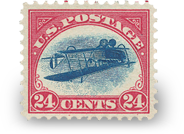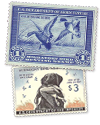For over a century, U.S. Postage stamps have been collected using a numbering system devised by the Scott Publishing Company. While comprehensive, its primary shortcoming is a lack of a hierarchical arrangement among the listed stamps. In other words, certain "whole numbers" in the Scott system represent entirely different issues (i.e., different denomination and/or face design) while other whole numbers signify an extremely minor and sometimes unintentional design anomaly due to such things as a stamp's position on a certain printing plate or the particular shade of ink mixed that day.
In many mid-19th century stamps, what most collectors would consider a minor variety is elevated to whole number status, leading to a lack of proportionality to the structure.
As an example, consider the one cent blue perforated Franklin stamp of 1857. The Scott Catalog lists no fewer than seven whole numbers for this stamp (18 through 24 inclusive) plus some letter suffixes and several different reliefs, types and plates within the whole numbers. Under the USD system, the government's one cent stamp of 1857-1860 is represented by No. 8, regardless of the completeness of the design elements at the edges resulting from different positions on different plates. For many collectors, one example of the type is sufficient. That is the basic premise behind the U.S. Design Numbering System.
The USD number is designed as neither a replacement nor a substitute for the Scott Numbering System. Countless millions of hours over the past century and a half have been devoted to researching every nuance of U.S. stamp production and design. For those whose interests lie in the hundreds of varieties, both major and minor, the Scott Numbering System will provide the basis for collecting for many years to come. However, for those interested in an overview, or cross section of U.S. philately, we believe that the U.S. Design Number will be of use in forming a design type set.
A collection based on the USD number system will make a truly interesting and extremely challenging set, particularly in high grade. It is hoped that this fresh approach to U.S. philately will open the door for thousands of new collectors as well as thousands of existing collectors to rediscover this fascinating and time-honored hobby.


